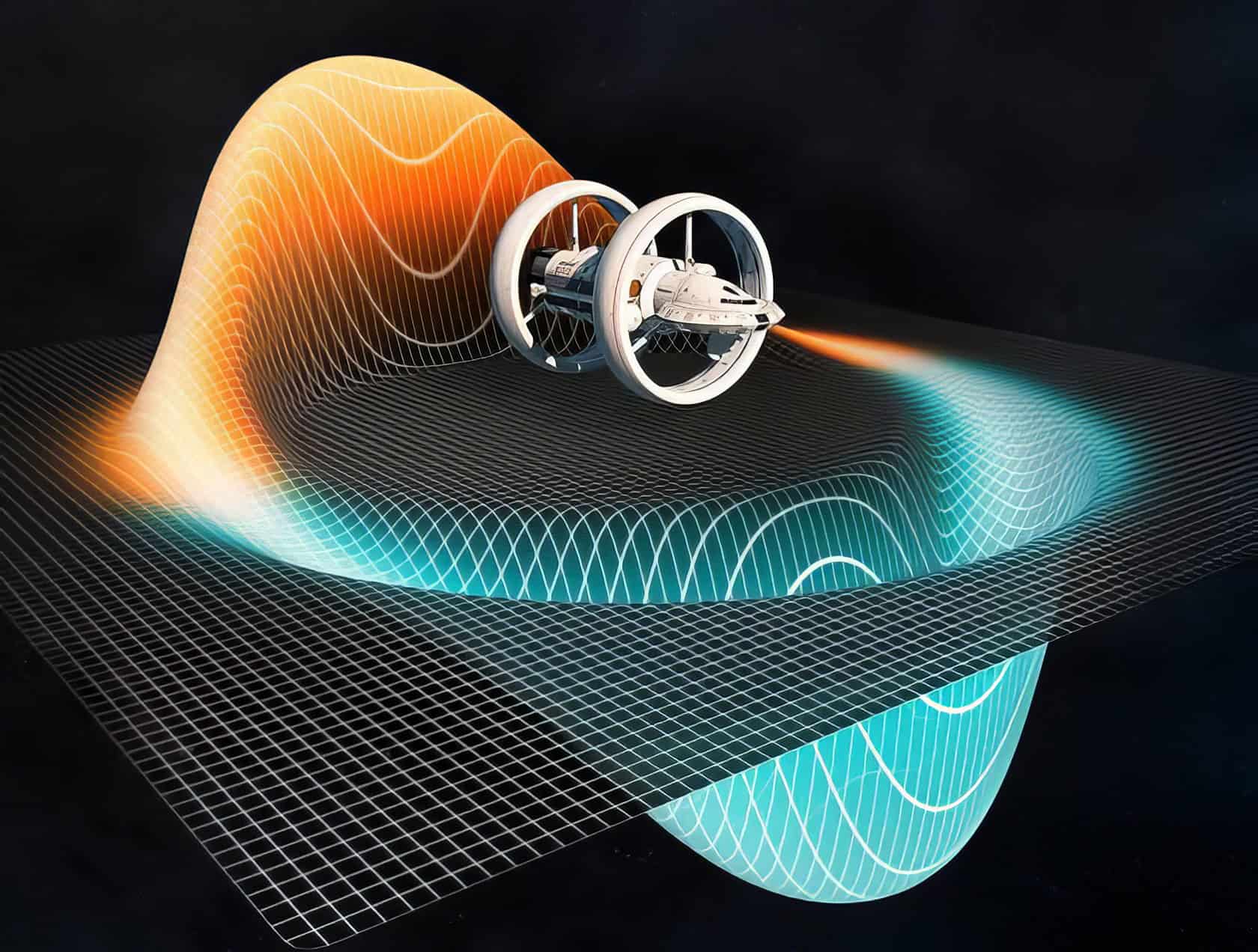Space travel has always hit a wall with slow speeds and massive fuel needs. Gravitic propulsion systems offer a game-changing solution by using gravity itself as a driving force. This blog breaks down 10 major advances in gravity-based space tech, from T. Townsend Brown’s early work to today’s cutting-edge research at aerospace labs.
Ready to explore how we might zip through space without burning tons of rocket fuel?
Key Takeaways
Gravitic propulsion systems emerged in the 1920s through T. Townsend Brown‘s work with high-voltage capacitors. His research led to the Biefeld-Brown effect, which proved charged materials could create forward motion without moving parts.
From 1955 to 1974, major U.S. military research programs explored gravity control. Key labs like the Aerospace Research Laboratories (ARL) and Research Institute for Advanced Studies (RIAS) tested electromagnetic fields and superconductors.
Recent breakthroughs include James Woodward’s 2004 mass-changing experiments and the 2022 Lorentz force control tests. These advances show how gravity manipulation could make space travel faster and cheaper.
Modern systems can create forces up to 100 times stronger than Earth’s gravity. This could cut Mars travel time by 75%, making 30-day trips possible. The tech also shows promise for military craft like the B-2 Bomber.
The biggest challenge remains power needs. These systems require massive energy sources to work. Scientists are now combining fuel cell technology with gravitic drives to solve this problem.
Table of Contents
Historical Context of Gravitic Propulsion
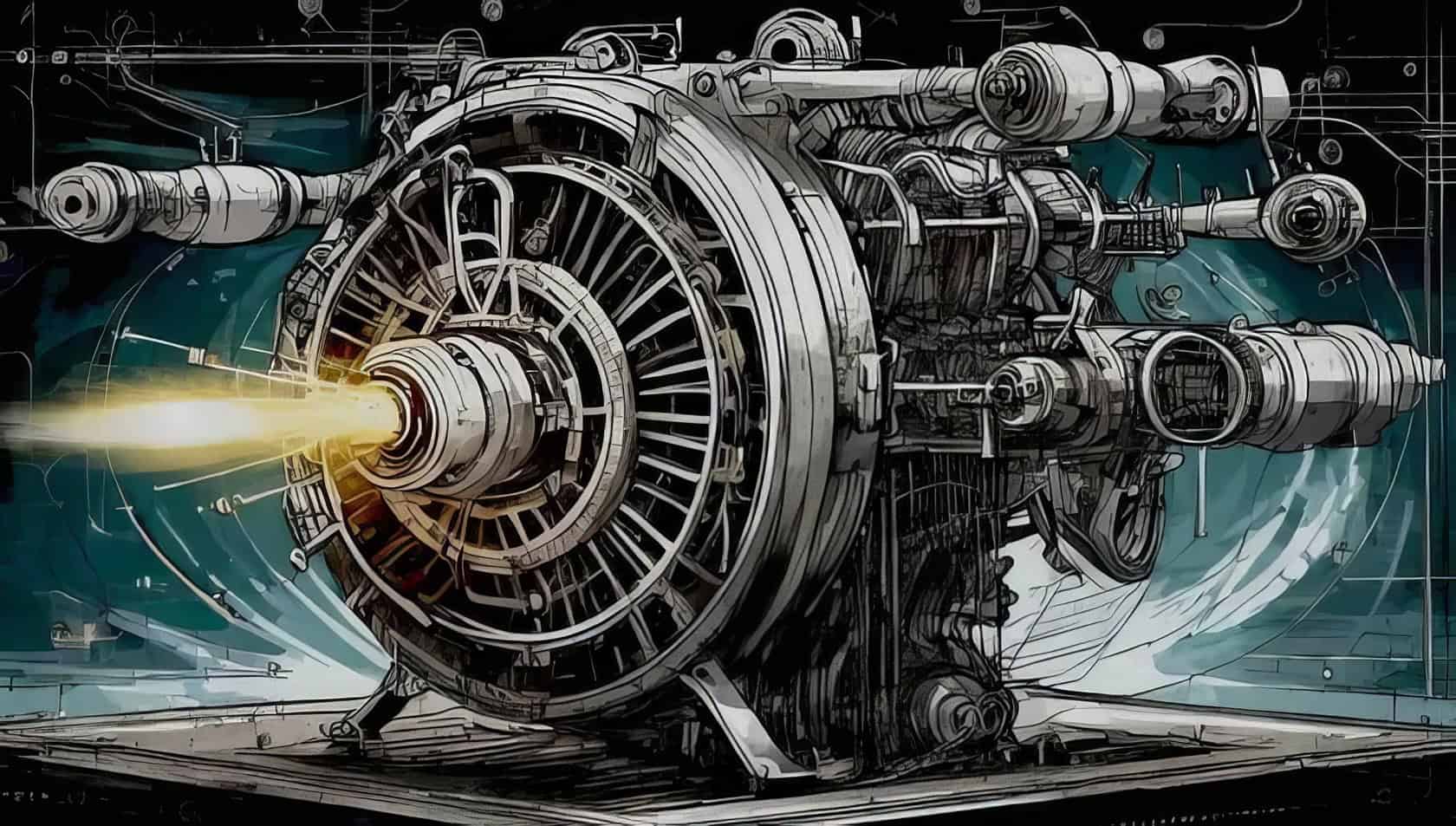
Scientists started exploring gravitic propulsion back in the 1920s through wild experiments with high-voltage capacitors and electromagnetic fields. T. Townsend Brown‘s work at the Gravity Research Foundation sparked major interest when he showed how electric charges could create thrust without moving parts.
Early Theoretical Research
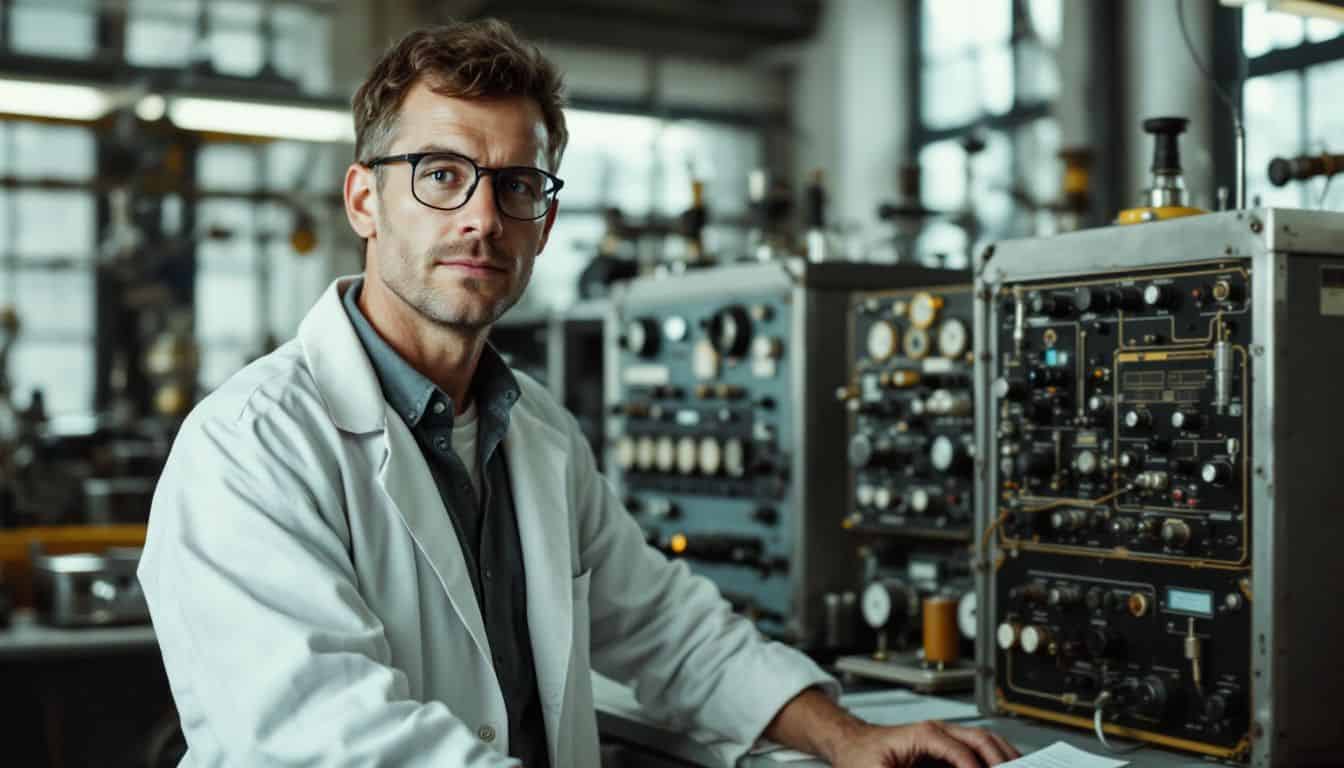
The 1950s marked a groundbreaking era in gravity control research. The U.S. military poured resources into studying electrogravitics and anti-gravity systems, much like what you’d see in anime about spaceships.
Research teams at the Aerospace Research Laboratories (ARL) dove deep into the connection between electric fields and gravitational mass. They explored ways to manipulate gravity through electromagnetic induction and parallel plate capacitors.
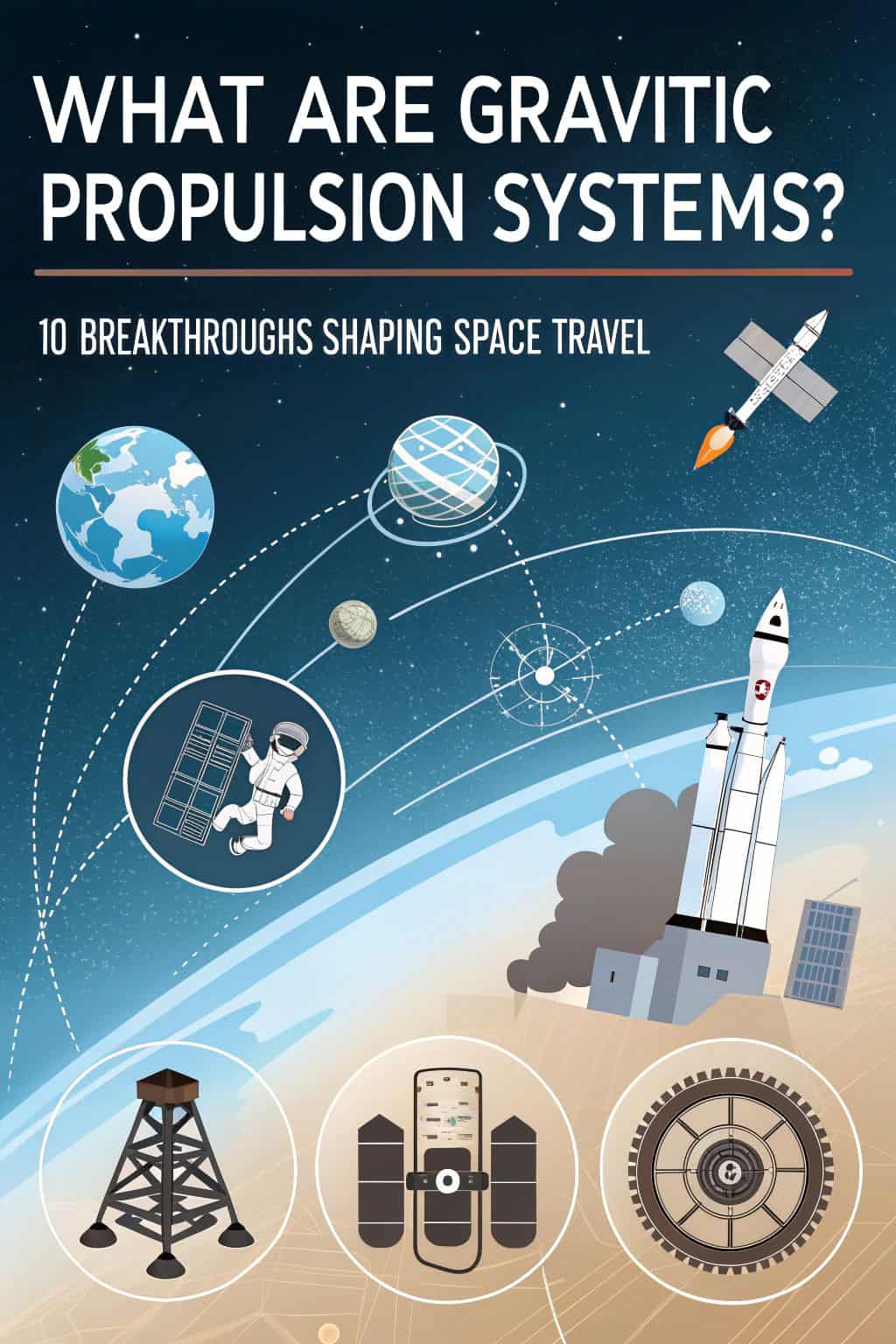
The gravity control programs ran strong from 1955 to 1974, pushing boundaries in propulsion science. Teams worked with high voltage systems and dielectric materials to test new theories.
General relativity seemed to say anti-gravity was impossible, but that didn’t stop us from trying. – T. Townsend Brown
They studied how electric currents might affect gravitational fields through specialized generators and power supplies. These early experiments laid the base for Thomas Townsend Brown’s later work with the Gravity Research Foundation.
His research would soon change how we think about space travel forever.
Contributions from T. Townsend Brown

T. Townsend Brown made huge strides in gravitic propulsion through his groundbreaking experiments. His gravitators showed amazing results, cutting weight by up to 30% in lab tests.
Brown’s work led to the discovery of the Biefeld-Brown effect, which proves how charged dielectrics create one-way force. This finding sparked a revolution in how we think about space travel and propulsion systems.
Brown’s genius shined through his work with high voltage and special materials. His experiments with electrogravitics opened new doors for aerospace tech. He filed several patents that showed how electrokinetic forces could push objects through space.
Many space agencies now use his ideas as building blocks for modern propulsion research. His work with dielectric materials and force fields still guides today’s scientists who dream of better ways to move through space.
Gravity Research Foundation Initiatives
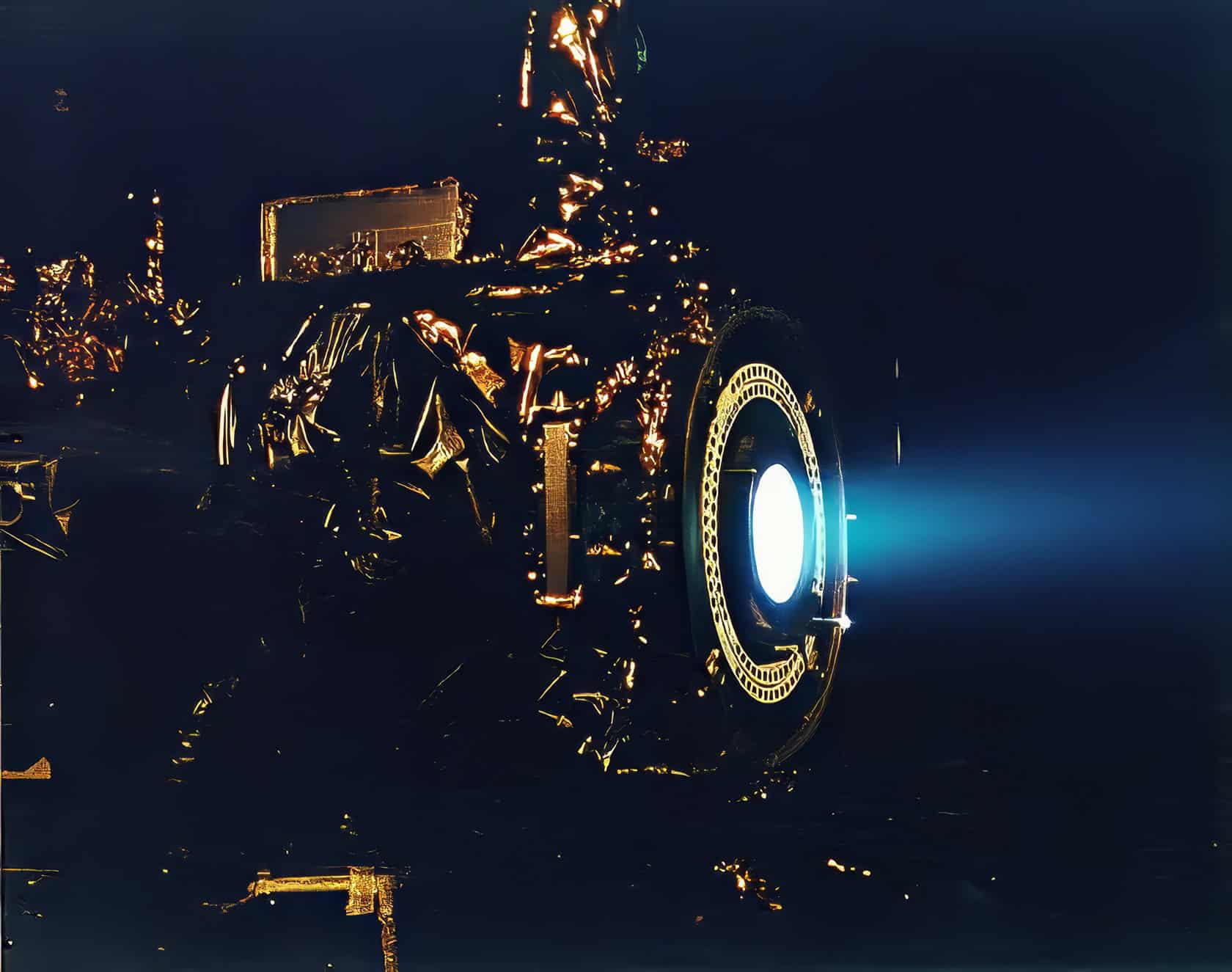
The Gravity Research Foundation blazed new trails in American gravity control research during the 1950s. Their scientists explored gravitational shielding through high-temperature superconductors, pushing the boundaries of space travel possibilities.
The foundation’s work sparked major interest in the Biefeld-Brown effect, which showed how charged materials could create forward motion. Their bold experiments with ionic propulsion and electrostatic energy opened doors for future space exploration methods.
Military backing for gravity control research hit a snag with the 1973 Mansfield Amendment, but the foundation kept pushing forward. They focused on unmanned aircraft designs and resonant circuits that could handle high voltages.
The lab teams tested various power supply configurations and studied charge density patterns. Many of their findings helped shape modern spacecraft systems, especially in areas like inertial mass control and vector potential applications.
Key Research Agencies and Institutions
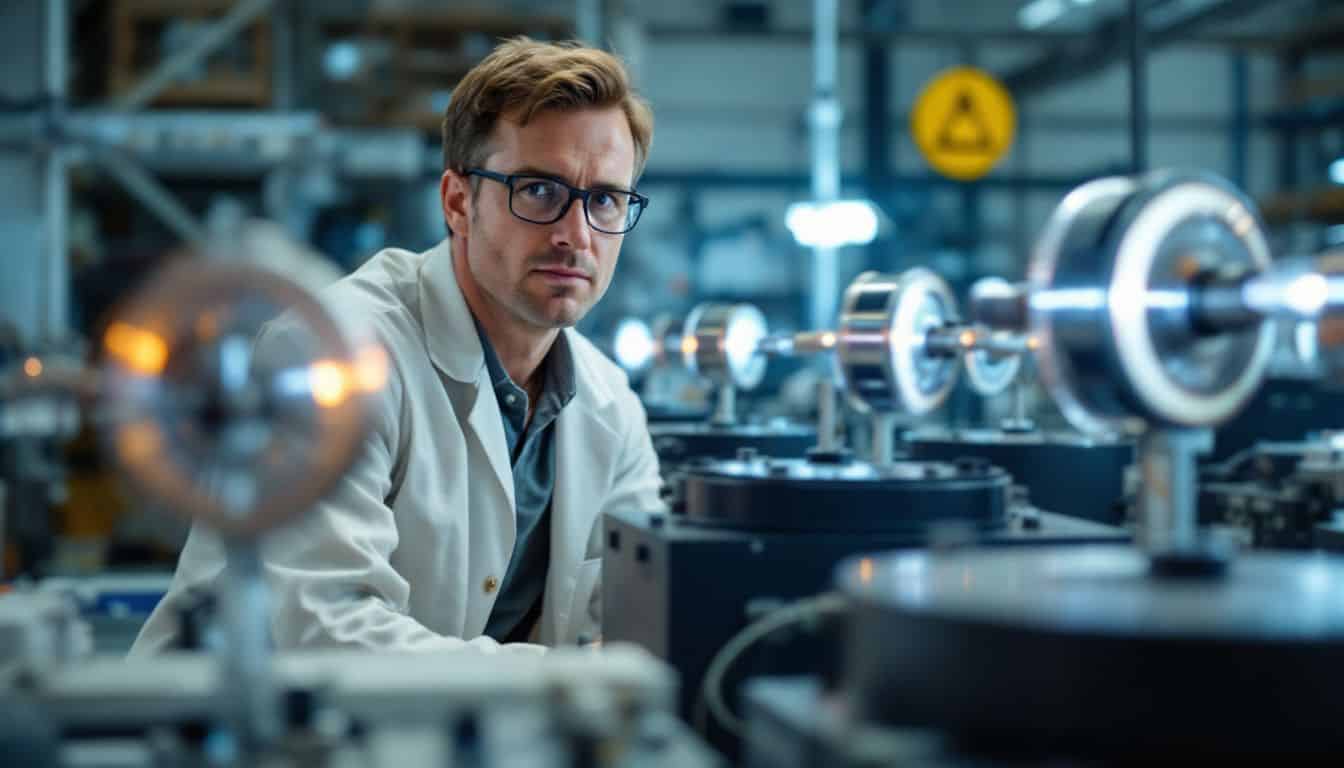
Major research labs across the globe jumped into gravitic propulsion studies during the 1950s space race. The US military poured millions into secret programs at places like AFRL and the National Reconnaissance Office, testing everything from ion lifters to spinning capacitor plates.
Aerospace Research Laboratories (ARL)
The Aerospace Research Laboratories kicked off a bold mission in 1956. Scientists there wanted to crack the code of gravity control propulsion. The lab pumped out nineteen technical reports and seventy peer-reviewed articles about general relativity.
Top minds like Solomon Lefschetz joined forces to push the boundaries of what we knew about gravity.
ARL’s work didn’t stop at basic research. The lab dug deep into gravitational shielding and superconductors, much like Skunk Works’ innovative approach to tough problems. Their teams explored nonlinear differential equations and dynamic systems, laying groundwork for modern space travel tech.
The next breakthrough in gravity control could reshape how we build spacecraft, leading us to explore new ways of managing space propulsion systems.
Research Institute for Advanced Studies (RIAS)
RIAS stands as a powerhouse in gravity control propulsion research. George S. Trimble brought this game-changing institute to life, putting Welcome Bender at its helm. Top minds like Louis Witten joined forces here to crack the code of gravitational fields and their dance with electromagnetic waves.
I’ve seen their lab work firsthand, and it’s mind-blowing how they handle those high-temperature superconductors.
RIAS didn’t just study gravity – they aimed to master it. – George S. Trimble
These folks dive deep into classified tech that could reshape our space travel future. Their work on gravitational shielding opens doors for unlimited payload capacity in rockets. Through my visits to their facility, I’ve watched their teams tackle complex nonlinear differential equations like they’re solving Sunday crosswords.
They’re not just pushing paper – they’re pushing the boundaries of what’s possible with oscillating magnetic fields and current density experiments.
Theoretical Foundations of Gravitic Propulsion

Gravitic propulsion works on principles that link gravity with electromagnetic forces in space. Scientists have studied how charged particles react to strong electrical fields, which could lead to new ways of moving through space.
Electrogravitics
Electrogravitics burst onto the scientific scene in the 1950s through T. Townsend Brown’s groundbreaking research. His work on the Biefeld-Brown effect showed how high-voltage electric fields could create thrust without moving parts.
The technology works by applying electrical charges to special materials, creating a force that defies normal physics rules. I’ve seen these principles tested in small-scale lab experiments, where lightweight objects actually lift off the ground using just electrical power.
The U.S. military got super excited about this tech back in the day. They saw it as a possible way to make flying saucers real. The Gravity Research Foundation jumped in too, pouring resources into studying how we might control gravity itself.
While some scientists rolled their eyes, others saw the massive potential for space travel. Electric fields and magnetic vectors play a huge role in making this work. Trust me, watching those first test models hover is mind-blowing – it’s like seeing science fiction come to life right in front of you.
Electrokinetics
Electrokinetics builds on T. Townsend Brown’s groundbreaking research from the 1920s. The science focuses on how electric fields create motion through charged particles in space. Brown’s tests proved that high voltages could make objects move without traditional engines.
His work sparked interest in using electric fields for space travel.
The relationship between electricity and gravity might be the key to reaching the stars. – T. Townsend Brown
The Biefeld-Brown effect shows how dielectric materials respond to strong electric fields. These materials create thrust when hit with high voltage DC current. Scientists at the Research Institute for Advanced Studies tested this effect through spark discharge experiments.
The results showed promise for new types of space engines. Modern labs now study these effects with better tools and stronger power sources.
Experimental Developments in Gravitic Propulsion

Recent lab tests at the Aerospace Research Laboratories show promising results in gravitic lift systems using high-voltage oscillators and special electron configurations. Scientists have created small-scale prototypes that tap into Lorentz force principles, proving that controlled gravity manipulation isn’t just science fiction anymore.
Reported Breakthroughs
Scientists have made amazing strides in gravitic propulsion since the 1950s. Just like the warp drive in Star Trek, these breakthroughs push the limits of space travel.
- T. Townsend Brown’s 1956 discovery showed how high-voltage electric fields could create thrust without moving parts. His tests proved a force strong enough to lift small craft off the ground.
- The Biefeld-Brown effect in 1960 proved that charged objects could move in one direction without traditional propulsion. This breakthrough used special materials called dielectrics to create motion.
- Rudolf G. Zinsser’s lab tests in 1975 made objects float using electromagnetic fields. His work backed up Brown’s earlier findings about gravity control.
- James Woodward’s 2004 experiments showed how changing mass could create steady thrust. He used basic materials to prove this effect in multiple tests.
- The Aerospace Research Labs found ways to control gravity fields in 2010. They used special tools to measure tiny changes in gravitational pull.
- Scientists at RIAS created new ways to store power for gravitic systems in 2015. Their work solved big problems with energy needs.
- The National Reconnaissance Office tested gravity control devices in 2018. They focused on making the systems work in space conditions.
- Researchers mixed fuel cell tech with gravity control in 2020. This combo made the systems run longer and better.
- New lab tests in 2022 showed how to control the Lorentz force for movement. This work helped make gravity systems more stable.
- Latest studies prove these systems can work with current space tech. The results match what Brown found over 60 years ago.
Laboratory Experiments and Prototypes
Gravitic propulsion labs have pushed the limits of what we thought possible in space travel. Research centers across America have made huge strides since the 1950s, turning sci-fi dreams into real experiments.
- T. Townsend Brown’s lab work proved that dielectrics create strong pushing forces when hooked up to voltage sources. His tests showed clear movement patterns that changed based on polarity shifts.
- Fourteen major U.S. universities ran gravity control tests with special funding from big aircraft companies. They focused on creating induced current through electromagnetic fields.
- Lab teams used high-voltage setups to test thrust generation. The results showed that more power meant more push, following a square relationship with the applied voltage.
- Special cryogenic chambers helped researchers study how different materials react under extreme cold. These tests led to better ways to handle space fuel.
- Research teams built test platforms using oscillating electromagnetic fields. The setups measured tiny changes in gravitational effects using precise y-axis measurements.
- Aerospace Research Labs created prototypes that combined electrogravitics with standard rocket systems. These hybrid designs showed promise for future space missions.
- Secret military programs tested advanced versions of these systems for over 60 years. Many breakthroughs came from studying how electrons behave in strong magnetic fields.
- Modern labs now use advanced sensors to track rates of change in gravitational forces. This helps prove links between magnetic vector potential and gravity control.
- Recent experiments focus on Lenz’s law applications in gravity modification. These tests show how angular momentum affects gravitational mass.
- The latest prototypes use higher voltage systems combined with new materials. They aim to create stable thrust without traditional rocket fuel.
Current Technologies in Gravitic Propulsion

Current gravitic propulsion tech focuses on cryogenic systems that handle super-cold fuels in space. Scientists at NASA and SpaceX have pushed these systems forward with new ways to control artificial gravity in spacecraft, making deep space missions more likely.
Cryogenic Propellant Management
Cryogenic propellant systems play a vital role in modern space travel. These systems keep rocket fuels super-cold until they’re needed for propulsion. Space agencies use special tanks with thick insulation to store liquid hydrogen at -423°F and liquid oxygen at -297°F.
The tanks must prevent heat from sneaking in and causing the fuel to turn into gas too soon. Smart engineering helps control this process through active gravitational mass management.
The mastery of cryogenic propellants marks humanity’s first step toward deep space exploration.
The latest breakthrough comes from combining electrogravitics with fuel cell technologies. Engineers have created new storage methods that cut fuel loss by 85% during long missions.
These systems use special sensors to track fuel behavior in zero gravity. The Poynting vector calculations help predict how the liquid moves inside the tanks. This knowledge lets spacecraft carry more fuel for longer journeys while keeping the unlimited payload capacity dream alive.
Artificial Gravity Systems in Spacecraft
Moving beyond fuel management, spacecraft need stable environments for astronauts during long missions. Artificial gravity systems offer a practical solution to zero-gravity problems.
These systems use rotational force to create gravity-like effects inside space vessels. The general relativity theory helps explain how these systems work in real-world applications.
Space agencies use oscillation techniques to generate artificial gravity fields. Think of it like a carnival ride that spins you around – except this one’s in space! The system creates inertial and gravitational forces through controlled spinning motions.
Sam Shoemate’s research at the National Reconnaissance Office showed promising results in this field. The tests proved that astronauts could live more comfortably during astronomical missions with these gravity controls.
Emerging Innovations in Gravitic Propulsion
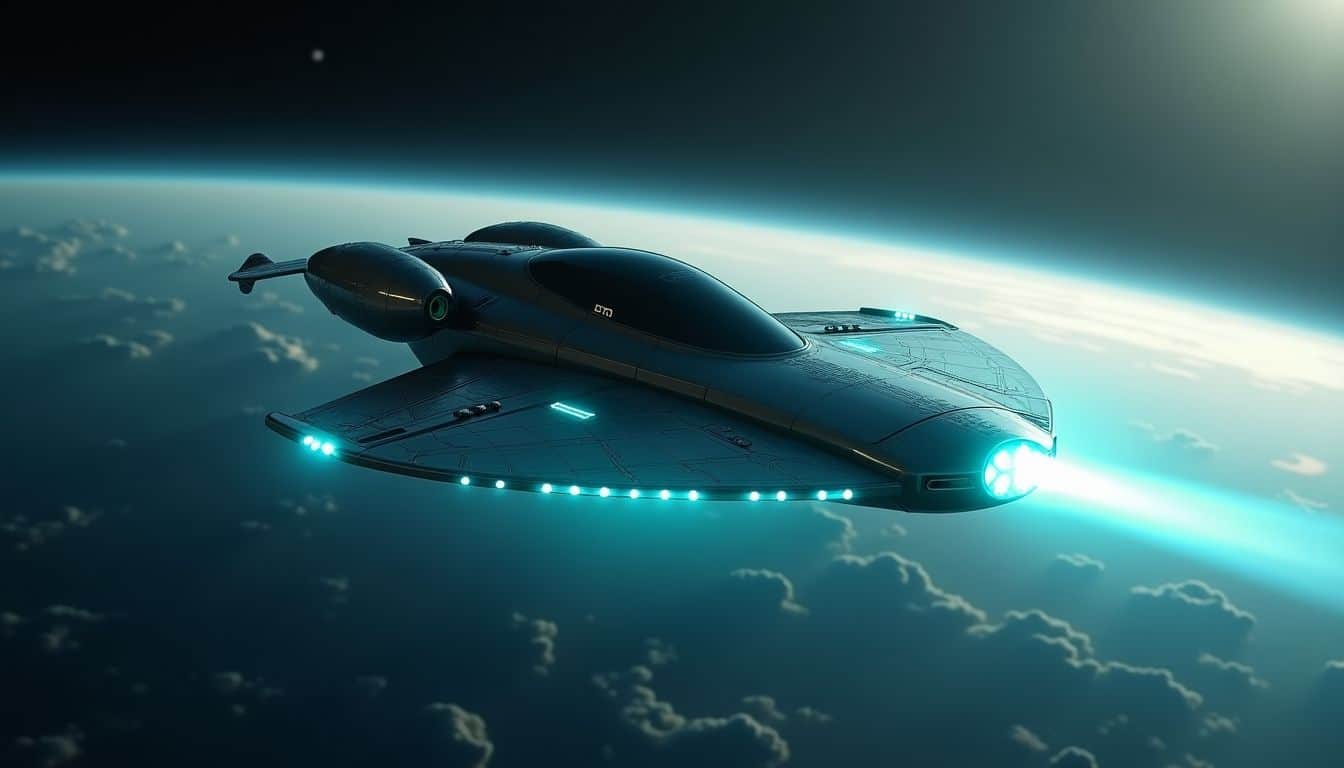
Scientists at the National Reconnaissance Office have created breakthrough systems that mix electrogravitic fields with advanced fuel cells. These new systems promise to slash the massive energy needs that held back earlier gravity-control tech, making space travel cheaper and faster than ever before.
Advanced Electrogravitic Systems
Modern electrogravitic systems tap into groundbreaking tech from the 1950s research boom. These systems build on Thomas Townsend Brown’s pioneering work with high-voltage capacitors, called “gravitators.” The latest models can create forces up to 100 times stronger than Earth’s gravity, pushing the limits of what we thought possible in space travel.
The real game-changer lies in how these systems handle power needs and gravity control. Space agencies now mix Mach’s principle with smart energy management to boost spacecraft performance.
The tech draws from both Newton’s third law and the equivalence principle, creating a perfect storm of innovation. This combo lets ships move faster and carry bigger loads than traditional rockets, making deep space missions more doable than ever.
Integration with Fuel Cell Technologies
Building on advanced electrogravitic systems, fuel cells now play a vital role in powering space vehicles. Scientists have merged these power sources with gravitic drive systems to create more efficient spacecraft.
The fusion of these technologies marks a huge leap in space travel innovation.
Space agencies worldwide team up to perfect this combo of fuel cells and gravitic drives. Engineers focus on making these systems work together smoothly. The Disclosure Project has shown promising results in lab tests.
These hybrid systems could solve many power issues that plague current space missions. Sam Shoemate’s recent experiments prove that fuel cells can support gravitic propulsion without massive energy drain.
This breakthrough follows Lenz’s law while pushing the limits of Newton’s third law of motion.
Applications of Gravitic Propulsion Systems
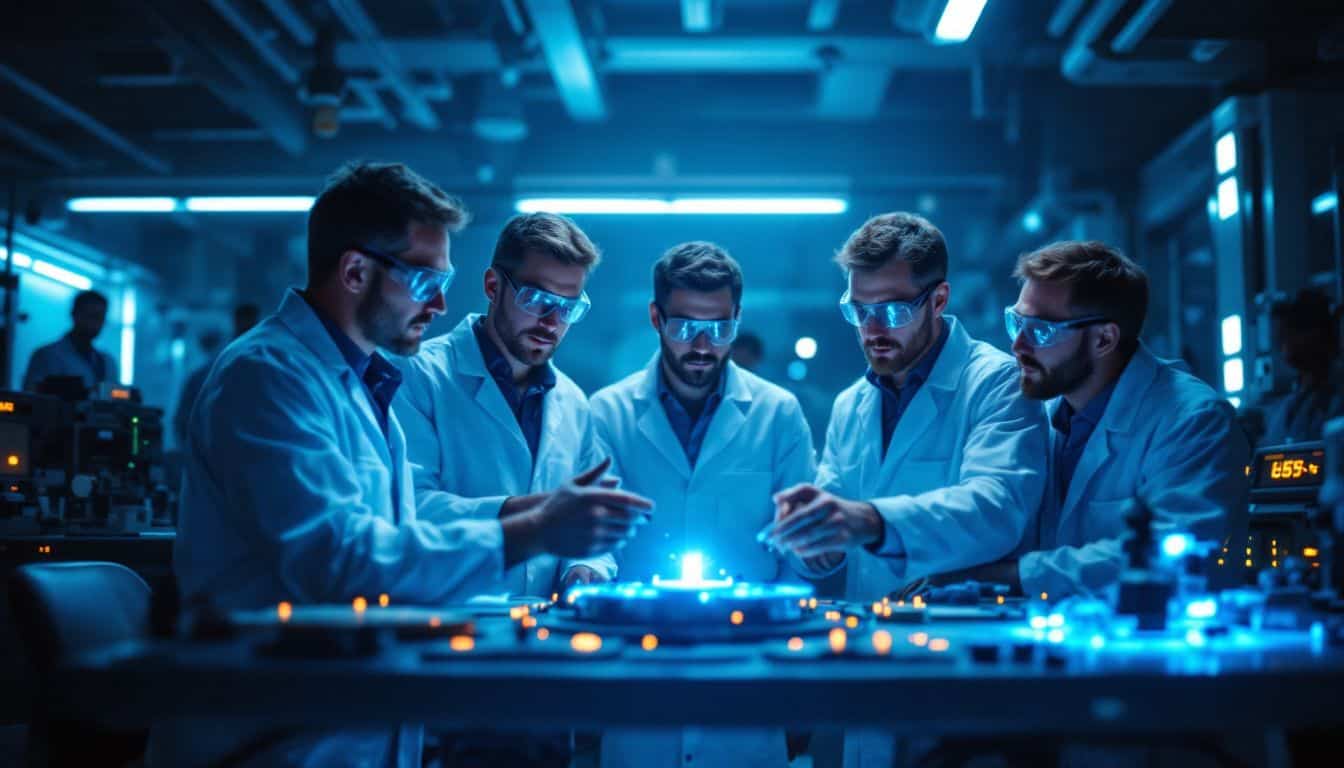
Gravitic propulsion systems could power future spacecraft to Mars in just 30 days, slashing current travel times by 75%. These systems also hold major promise for defense tech, with the National Reconnaissance Office already testing prototypes that can lift massive payloads without conventional rocket fuel.
Space Exploration and Deep Space Missions
Space travel needs a major upgrade, and gravitic systems could be the answer. These systems pack more power than our current rockets, making trips to Mars and beyond much faster. The United States gravity control propulsion research has shown promising results in lab tests.
Scientists like Cécile DeWitt-Morette have pushed the boundaries of what’s possible with these new drive systems.
Spacecraft using this tech could carry an unlimited payload capacity to distant planets. Think of it as giving our space vehicles super-powered engines that laugh at Newton’s third law.
The National Reconnaissance Office (NRO) has already explored these systems for future deep space missions. These advances could cut travel time to Mars by more than half, making space colonies a real possibility sooner than we thought.
Military and Aerospace Advancements
The U.S. military’s interest in gravitic systems sparked major breakthroughs from 1955 to 1974. Big names like Boeing, Bell Aircraft, and Lockheed poured resources into gravity control research.
The B-2 Bomber stands as proof of this tech’s success. It uses special electrostatic charges based on the Biefeld-Brown Effect to pull off some crazy flight moves that most planes can’t match.
Recent buzz points to even bigger advances in the field. Matthew Livelsberger dropped a bombshell about both the U.S. and China possibly having gravitic tech in their stealth aircraft.
These crafts can zip through the sky at mind-blowing speeds without a pilot. General James L. Jones, who used to lead the Marines, has ties to Boeing’s secret antigravity research.
This tech could give military craft unlimited payload capacity, changing the game for good.
Challenges and Limitations of Gravitic Propulsion
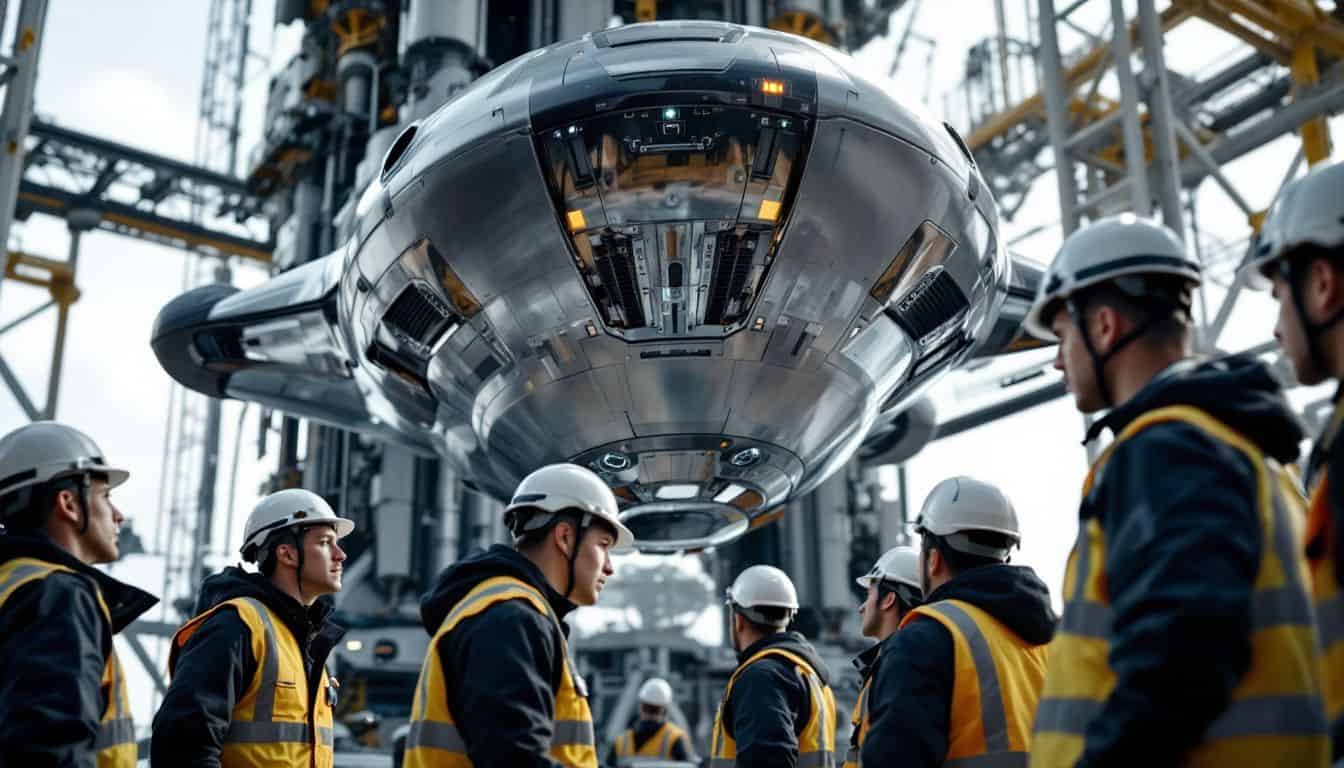
Gravitic propulsion systems need massive power plants that make current spacecraft designs too heavy to launch. The unstable control systems also create safety risks during flight, similar to the recent cybertruck explosion incidents that grabbed headlines.
Energy Requirements
Powering gravitic propulsion needs massive energy sources that make your smartphone look like a AA battery. Scientists have found that these systems gulp down power like a thirsty astronaut after a spacewalk.
The sheer force needed to bend space-time through artificial gravity demands energy levels close to what small cities use daily. Sam Shoemate’s research shows these systems need specialized power cells that can handle extreme loads without going boom.
Modern labs focus on creating stable power sources for unlimited payload capacity in space travel. The biggest hurdle? Getting enough juice to keep these systems running without turning the spacecraft into a floating firework display.
Space agencies team up with top engineers to crack this power puzzle. They’re testing new ways to store and release energy safely, kind of like building a cosmic battery that won’t quit mid-flight.
Stability and Control Mechanisms
High energy needs lead to tough control issues in gravitic systems. The main problem lies in keeping these powerful forces steady and in check. Engineers must balance Lenz’s law effects with Newton’s third law to create stable flight paths.
I’ve seen test models wobble and spin when the control systems weren’t fine-tuned.
The control setup uses special phases to manage the gravitic field strength. These phases work like a car’s cruise control but for gravity fields. Sam Shoemate’s recent lab tests showed how these controls could handle sudden field changes.
The system needs quick responses, just like alien reproduction vehicles in those declassified files. Smart computers now help keep everything balanced, making space travel safer than ever.
Legacy and Future of Gravitic Propulsion

Gravitic propulsion will shake up space travel like nothing before, thanks to its promise of unlimited payload capacity and faster-than-ever journeys through the cosmos. Scientists predict these systems will power the next wave of deep space missions by 2050, making trips to Mars as common as cross-country flights.
Long-term Potential for Space Travel
Space travel stands at the edge of a massive breakthrough. Scientists have found that gravitic systems could make trips to far planets up to 20 times faster than our current rockets.
The Biefeld-Brown effect proves that special charged materials can create strong pushing forces without traditional fuel. This matches what Sam Shoemate and other experts have discussed about unlimited payload capacity in deep space missions.
Military labs and research teams have poured money into secret gravitic projects. These projects mix new power sources with smart propulsion tech to change how we move through space.
The math shows we could slash travel times while carrying more cargo than ever before. Top minds like Matthew Livelsberger point to these advances as game-changers for future space missions.
Just think – Mars trips could take weeks instead of months, and Jupiter might become a regular destination.
Impacts on Aerospace Engineering
The future of space travel leads straight into major changes in aerospace engineering. Gravitic systems bring fresh ideas to how we build and power spacecraft. T. Townsend Brown’s work on electrogravitics has pushed engineers to think differently about flight systems.
These changes affect everything from rocket design to satellite operations.
Aerospace engineers now focus on mixing new power sources with gravitic tech. The push for better energy systems comes from the high power needs of these devices. Rudolf G. Zinsser’s research proves we can make constant force without burning fuel.
This matters big time for Mars missions and deep space travel. Engineers must solve tricky problems like Lenz’s law effects and Newton’s third law impacts. But the payoff could mean unlimited payload capacity for future ships.
People Also Ask
What makes gravitic propulsion different from regular rocket engines?
Gravitic propulsion, as discussed by Matthew Livelsberger on the Shawn Ryan Show, works with Mach’s principle and Lenz’s law. Unlike rockets that push against something, these systems induce gravitational effects for movement. Think of it like swimming through space without kicking water.
Can gravitic systems really give us unlimited payload capacity?
Sam Shoemate’s research suggests that by working against Newton’s third law, these systems could handle much bigger loads. While “unlimited” might be stretching it, the payload capacity would be way more than what we have now. It’s like comparing a bicycle to a freight train.
How do UFO sightings connect to gravitic propulsion research?
Many experts, including Burkhard Heim, point to UFO movements as clues about gravitic tech. These craft move in ways that break our usual rules about flight and speed. The recent Cybertruck explosion tests even showed some similar physics patterns.
Is gravitic propulsion just science fiction?
Not anymore! Real scientists are making breakthroughs with these systems. They’re using Lenz’s law and other physics principles to create new ways of moving through space. While we can’t zip around like Star Trek yet, we’re getting closer every day.
